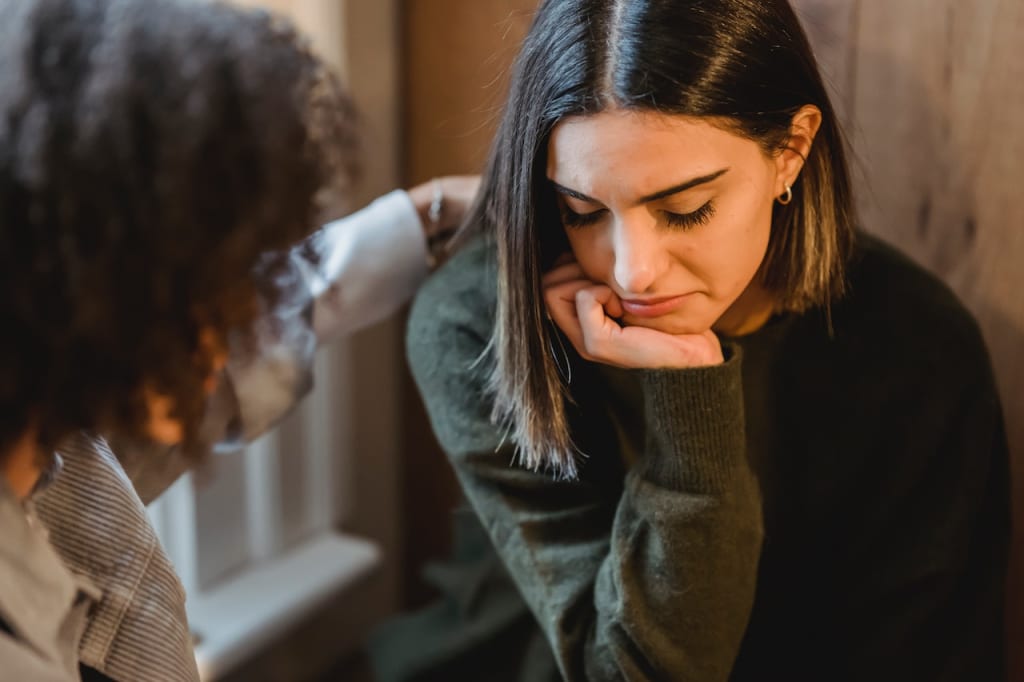What is anxiety disorder? Know the symptoms and causes
Health Desk- Experiencing occasional anxiety is a normal part of life. However, people with anxiety disorders often have intense, excessive, and persistent worry and fear about everyday situations. Often, anxiety disorders involve repeated episodes of intense worry and sudden feelings of fear or terror that reach a peak within minutes (panic attacks).

Health Desk- Experiencing occasional anxiety is a normal part of life. However, people with anxiety disorders often have intense, excessive, and persistent worry and fear about everyday situations. Often, anxiety disorders involve repeated episodes of intense worry and sudden feelings of fear or terror that reach a peak within minutes (panic attacks).
These feelings of worry and panic interfere with daily activities, are difficult to control, are out of proportion to the actual danger and can last for a long time. You may avoid places or situations to stop these feelings. Symptoms may begin during childhood or adolescence and continue into adulthood.
What is anxiety disorder ?
Examples of anxiety disorders include generalized anxiety disorder, social anxiety disorder (social phobia), specific phobias, and separation anxiety disorder. You may have more than one anxiety disorder. Sometimes anxiety stems from a medical condition that requires treatment.
Any type of anxiety you have, treatment can help ?
Common anxiety signs and symptoms include:
1. Feeling nervous, anxious or tense.
2. Feeling of impending danger, panic or doom.
3. Increase in heart rate.
4.Rapid breathing (hyperventilation).
5. Excessive sweating.
6. Vibration of the body again and again.
7. Feeling weak or tired.
8. Trouble concentrating or thinking about anything other than the current concern.
9. Trouble sleeping (Insomnia problem)
10. Experiencing Gastrointestinal Problems
11. Difficulty in controlling anxiety.
12. An urge to avoid things that trigger anxiety.
There are many types of anxiety disorders such as-
1. Agoraphobia is a type of anxiety disorder in which you fear and often avoid places or situations that may cause you panic and make you feel trapped, helpless or embarrassed.
2.Anxiety disorder due to a medical condition involves symptoms of intense anxiety or panic that are directly caused by a physical health problem.
* These symptoms and signs show that you are suffering from anxiety disorder, know the treatment and prevention measures
3.Generalized anxiety disorder involves persistent and excessive worrying and worrying about activities or events – even common, routine issues. Anxiety is out of proportion to the actual situation, it is difficult to control and it affects how you feel physically. It is often accompanied by other anxiety disorders or depression.
4. Panic disorder involves repeated episodes of intense anxiety and sudden feelings of fear or terror that reach a peak within minutes (panic attacks). You may have a feeling of impending doom, shortness of breath, chest pain, or a fast, fluttering or pounding heart (heart palpitations). These panic attacks can lead to anxiety about them happening again or to avoid the situations in which they occurred.
5. Selective mutism is the persistent failure of children to speak in certain situations, such as school, even when they can speak in other situations, such as at home with close family members. It can interfere with school, work, and social functioning.
6. Separation anxiety disorder is a childhood disorder, which is excessive for the child’s level of development and is related to separation from parents or other people taking on the role of parent.
7. Social anxiety disorder (social phobia) involves avoidance of social situations due to high levels of anxiety, fear and embarrassment, self-consciousness and worry about being judged or viewed negatively by others.
8. Specific phobias are characterized by great anxiety when you are exposed to a specific object or situation and a desire to avoid it. Phobias provoke panic attacks in some people.
9.Substance-induced anxiety disorder is characterized by symptoms of intense anxiety or panic that are a direct result of drug abuse, drug use, exposure to a toxic substance, or withdrawal from drugs.
10.Other specified anxiety disorder and unspecified anxiety disorder are terms for worries or fears that do not meet the exact criteria of any of the other anxiety disorders but are significant enough to be distressing and disruptive.
About the Creator
Enjoyed the story? Support the Creator.
Subscribe for free to receive all their stories in your feed. You could also pledge your support or give them a one-off tip, letting them know you appreciate their work.





Comments
There are no comments for this story
Be the first to respond and start the conversation.